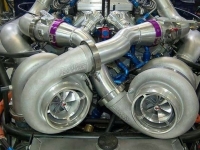SMOG CHECK
$31.75
Learn MoreEnjoying Chevrolet's Iconic Sport Coupe
By Steve Laser
Contributing Editor
We've been fans of the Chevrolet Camaro since the first one hit the streets for the 1967 model year. Yet for one reason or another, we never had the chance to buy one of the first generation (’67-’69) models. However, we have been proud owners of three second generation editions: 1970 and ’72 V8 sport coupes and a ’79 Z-28 (my first new car). As collector cars, there’s no argument that a first generation model is the one to have – especially the extremely popular ’69. Yet prices for highoptioned, rare or well restored cars have skyrocketed in recent years. What’s a frustrated Camaro fan to do? Consider a second generation model.
Well over a million were built during the decade-plus production run. Prices are still reasonable for cars in good condition. Chevrolet and a huge network of aftermarket suppliers offer everything you need to restore, refresh or enhance one of these fun-to-drive coupes. The ’70-’73s remain our favorite for several reasons. First, the small chrome bumpers and round taillights are really attractive. Second, the Rally Sport option included the famous split front bumper and a grille surrounded by a urethane nose. Third, the legendary small-block V8 put out great performance versus later models that were saddled with emissions controlling hardware. And fourth, they’re likely to increase in value in the years ahead. Don’t get us wrong: despite the rather tepid performance, we loved our brand new ’79 Z28. It had a more upgraded interior with the first new instrument panel in nine years, the exterior graphics were cool and like we said, it was my first brand new car.
I ordered the Z-28 from Martin Chevrolet in Torrance. It took about three months to get it, even though it was built at the GM plant in Van Nuys. I could barely afford the extra cost of the Z-28 option, so I nixed things like power windows and the custom interior. The biggest disappointment was the fact that you couldn’t order a manual transmission in California at the time. Something to do with emissions. Yet the good old 3-speed Turbo Hydra-matic mated well with the 350 V8. California Z-28’s put out just 170 horsepower while those for the rest of the country had 175. That’s a far cry from the 360 hp that the LT1 cranked out in the fantastic ’70 Z-28. After enjoying the ’79 for several years, I traded it in on a new Chevy van conversion.
Why? Well, that’s a subject for a future story. Let’s say that I had a shift in priorities and leave it at that. Fast forward to 1995. I was growing nostalgic for another second generation Camaro. I finally found an original owner 1970 model advertised right here in Autos & Parts. It was a well-worn car that needed quite a bit of cosmetic work. But it still sported the original paint! This was a base coupe with the 307 V8 option, air conditioning, power steering and brakes and an AM radio. I kept the car for five years as a daily driver.
The original owner was very good about maintenance, so the engine was in great shape after all those years. I had the timing chain and water pump changed but never had to do anything major to the engine or transmission. If you’ve never driven a second generation Camaro, there are a couple of things to note. The doors are very long and heavy. Chevy eliminated the quarter windows of the first generation for a more sporty look. That’s fine – until you try squeezing into the driver’s seat when someone has parked too close. The rear seat is useless for all but children. Yet the same could be said for other sporty coupes from this era. The trunk is also tiny. Perhaps that’s why the third generation Camaro that debuted for 1982 was a hatchback.
What about the ‘72? Well, my wife owned that one before we met. The second generation appealed to men and women of all ages. Maybe that’s why Chevy kept it in production for so long. We can offer some tips for first-time buyers. Do your research. A variety of price guides will give you an idea what models are typically worth. Many of these cars were run hard and put away wet. Beware of cars that are in need of a total restoration. The cost to bring one back to life would be better spent on a first generation Camaro. There are folks out there who know Camaros so well they can recite model codes, horsepower figures and production numbers. You’re likely to find them at Chevy car shows and the like. That’s another way to locate a car. So, having owned three would we do it again? You bet. But first, we’d head back to Martin Chevrolet to check out the all new, most powerful ever 2020 Camaro.

